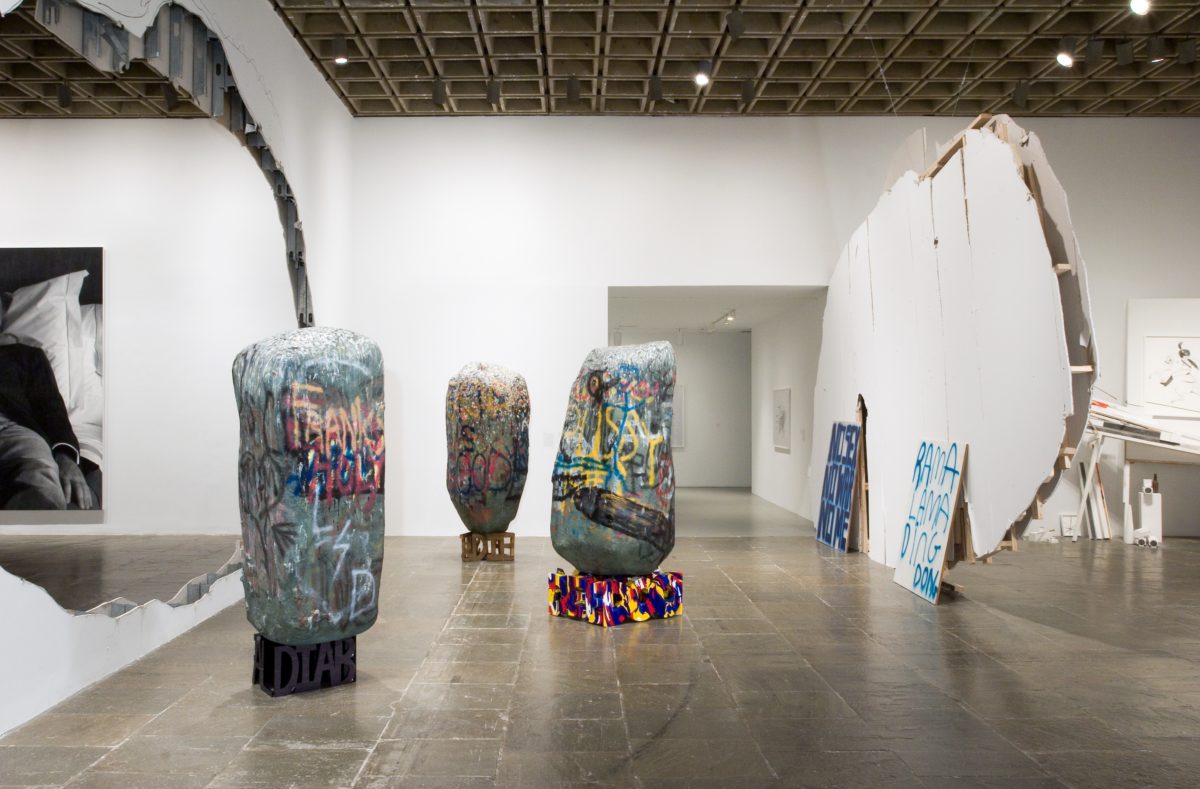But what was truly odd and out of place was to see modern art in a modern art museum.

We live in a world of things we can touch, manipulate, influence and change. We are slowly abandoning the illusion that our selves are individual creations. We are social creatures, our culture and our objects are socially shaped and created, and technology is starting to give us the tools to make the social structure visible and explicit.
The Open Source movement has shown us how to create software built by hundreds of people. Huge collective creations like Wikipedia mimic social information construction in building a body of knowledge that is almost as reliable (and more relevant and real-time) than the Encyclopaedia Britannica. Social computing thrives on customer-created and socially-modified content. In the midst of all this, art in a museum is still something you can only experience at a safety distance and behind a glass.
In the Whitney Museum there were objects that screamed to be touched, used, and experienced. But the setting was that of a traditional “don’t touch, don’t smell” museum: people in uniform in each room were making sure that nobody got too close or even just at an odd angle from an art piece (Husband was stopped by a guard when he tried to walk behind a sculpture to avoid the crowd). The setting defeated the purpose of those artists who tried to connect with the public at a more pervasive way. Even when the artists left something for visitors to take and bring home, nobody did. If the artist is having fun with reality and representation, the public is still just watching at a distance.
Compare this with Alexander Calder‘s Cirque, also housed at the Whitney.
… tiny wire performers, ingeniously articulated to walk tightropes, dance, lift weights, and engage in acrobatics in the ring. The Parisian avant-garde would gather in Calder’s studio to see the circus in operation.
Some pieces of the Circus are shown at the Whitney, protected inside a glass case, and visitors can watch a video of Calder using the circus pieces to create a Calder Cirque’s performance. The once alive, involving and emotional experience becomes a museum piece (from the Merriam-Webster dictionary: 1. something preserved in or suitable for a museum; 2. one that is out-of-date: a thing of the past).
In order to preserve the art piece, museums sacrifice the art experience.
Don’t get me wrong: I think that the Whitney is a great museum. It was the first to show Keith Haring’s paintings. At the 2006 Biennials is showing drawings from Daniel Johnston and shows anti-war art pieces. Perhaps, the contrast between the museum experience and art experience was so strong, exactly because the Whitney museum selects more daring and interesting artists for its exhibits. I do understand that museums are having a tough time surviving between shrinking founding and fierce competition from other forms of entertainment. I would argue, though that this is not because art and expression are no longer relevant to our society, nor because people need to be educated to understand art. It’s because museums need to evolve and adapt to what society needs from art today.
[By the way, dear Whitney Museum, your site is a pain to view and navigate, and it even crashed my browser. It may be another sign that Modern Art Museums are not synch with modern society or just that you want people to buy the Biennial Catalogue rather than providing useful information and a fair representation of artists and art on your website. But if you find some value at all in having a website, please listen to your designers, information architects, and usability people. And if you don’t have them or they are not good, hire some good ones for your next site. Or ask for help].
Tags: Whitney, Biennial2006, museums, moder art, society, technology
